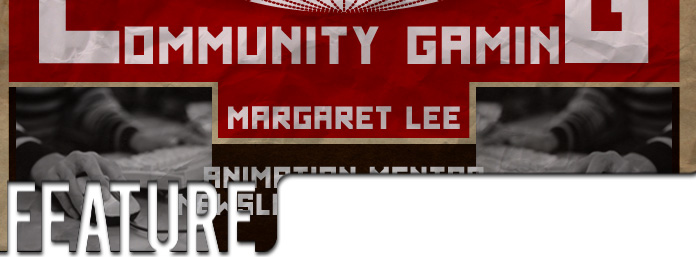

|

|

|

|

|

|
|
|
The Revolution of Community Gaming
By Margaret Lee When all 20,000 tickets are sold out in minutes, you'd think Ozzy Osbourne was playing the event. At Blizzcon 2009, the annual convention hosted by game maker Blizzard Entertainment, Ozzy did rock the house, but only as the curtain call to celebrate the gold standard of community games: World of Warcraft (or WoW). With 11.5 million players worldwide, WoW is the most massively profitable multiplayer online game (MMO for short) available; almost half of those players are based in the United States and pay a $20 monthly subscription fee. A cultural phenomenon, WoW sustains its own economy. In China, players trade virtual WoW goods and credits for real goods and cash, which the government fears will threaten the real economy. There are also plans in place for a WoW movie directed by Spider-Man's Sam Raimi. Old-school multiplayer games allowed an individual to play a game on a computer and then invite buddies to play over a local computer network. The community gaming revolution has taken gaming to a new level where the community is the platform. The much richer game experience adds the benefits of social media, so that the game has evolved into a context for how players interacts with their friends. For example, in World of Warcraft, "players assume the roles of Warcraft heroes as they explore, adventure, and quest across a vast world," the game's website explains. As characters become more developed, they gain various talents and skills on different "missions" or "quests" on the planet of Azeroth. Through these experiences, players are rewarded with points, prizes, and/or in-game money. Players can also join groups or guilds, ranging from simple dynamic duos to elaborate webs of hundreds of players. More than 150 artists are employed to create and maintain the WoW world, whose storylines and characters are inspired by Middle Ages mythology and author J.R.R. Tolkien's Lord of the Rings trilogy. The fantasy depictions of warlocks, orcs, elves, and medieval humans in an otherworldly landscape even spawned an art exhibition at the Laguna Art Museum this past summer. The WoW artists have succeeded in creating an alternative universe for devoted gamers, such as Marisa Ong. A software producer and a veteran of many game companies, Ong spends most of her extra-curricular hours playing WoW. "Probably three hours a day after work and more than that on the weekends. That doesn't count the seven to ten hours a week spent managing our friends and family guild, doing research, and sending emails to guild members," Ong explained. "The game is complex enough to have held my interest for four years straight. It's all consuming." Ong's circle of 30 guild friends and family members includes her husband Brian Morgan, another games professional, who also finds time to play Diablo and Quake, other MMO games. "If we had kids we would not be doing this," Ong said. Community gaming has spread into the console market as well. Multiplayer console games for the XBox, PlayStation, PSP, and Wii are now offering broader interaction and connectivity through third-party networks. Xbox Live plans to offer Facebook and Twitter integration, as well as extensions to other platforms, such as handhelds and mobile phones. Bringing these services altogether into one multiplayer gaming service can cost users up to $50 a year for services such as the Xbox Live Gold. Casual games, such as Rock Band, Guitar Hero, and Wii Sports, are extremely popular and invite group participation. Facebook hosts multiplayer games in which a user's network of friends can play together, such as Mafia Wars, Farmville, and Scrabulous, an unauthorized version of Scrabble, which had hundreds of thousands of users before it was shut down by Scrabble's parent company, Hasbro, last year. But as Bill Chinn, chief technology officer of Underground Development at Activision, pointed out, "There has been no equivalent to WoW in console games or the casual market." He added, referring to the model of offering free-of-charge games on the Internet on sites such as Yahoo! or Facebook, "It's not clear that gaming can make money through advertising like broadcast television." In terms of games development, "MMOs are the Holy Grail. They make the most money, but also require continual support and an extensive infrastructure to maintain," Chinn said. Like a big budget Hollywood film, a new MMO title requires a strong launch and a marketing campaign to be successful. By the time the MMO is ready for release, tens of millions of dollars may have already gone into its development over a span of several years. In a hit-driven industry, a poor game launch could mean a loss of millions of dollars and years of labor and even the existence of the company that produced it. Ong and Morgan were some of the lucky MMO players to snag the $125 Blizzcon tickets this year. In addition to WoW, Blizzard Entertainment's annual conference also celebrated other MMO franchises, such as StarCraft and Diablo, thought it was obvious that WoW was the big draw. Bigger than the Diablo artists' panel, bigger than the StarCraft figurines, bigger than Ozzy, who closed the show. The couple drove down to Anaheim from the Bay Area, participated in the two day long "insanity" that was Blizzcon, and even managed a side trip to Disneyland. But the highlight of Blizzcon 2009, according the Ong, was the chance to hang out with fellow guild members in real time and real space.
About Margaret Lee Margaret Lee is a freelance writer who lives in the Bay Area. |
|
Copyright © AnimationMentor.com ® All Rights Reserved